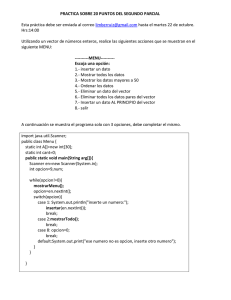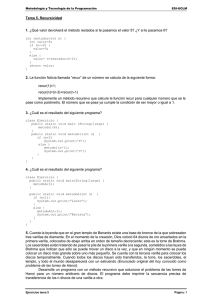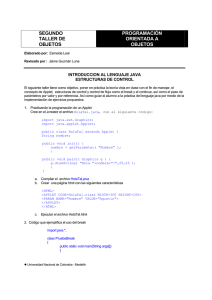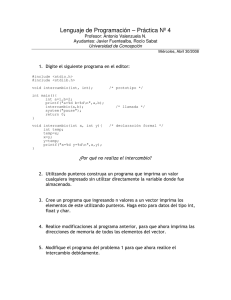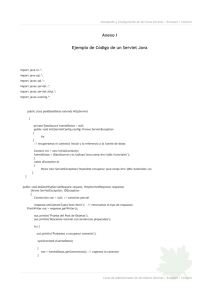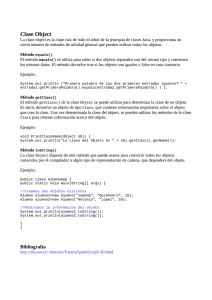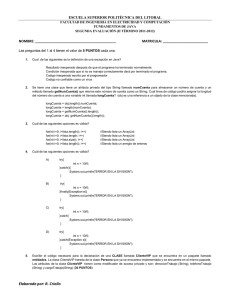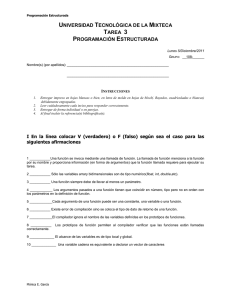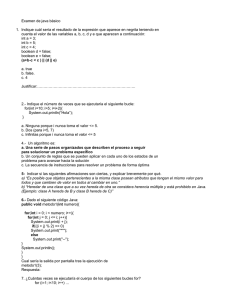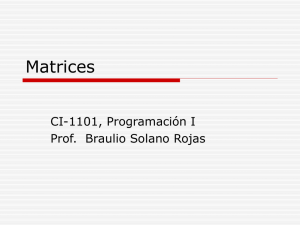ProductoresConsumidores
Anuncio
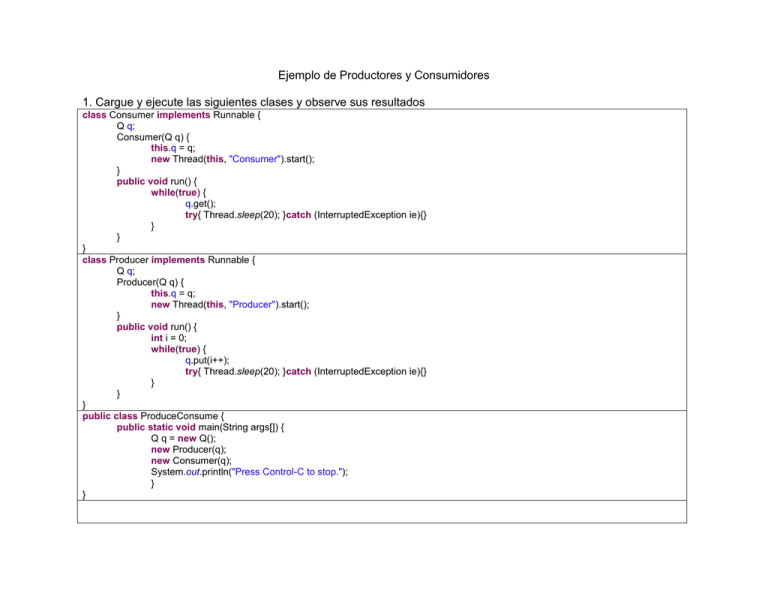
Ejemplo de Productores y Consumidores
1. Cargue y ejecute las siguientes clases y observe sus resultados
class Consumer implements Runnable {
Q q;
Consumer(Q q) {
this.q = q;
new Thread(this, "Consumer").start();
}
public void run() {
while(true) {
q.get();
try{ Thread.sleep(20); }catch (InterruptedException ie){}
}
}
}
class Producer implements Runnable {
Q q;
Producer(Q q) {
this.q = q;
new Thread(this, "Producer").start();
}
public void run() {
int i = 0;
while(true) {
q.put(i++);
try{ Thread.sleep(20); }catch (InterruptedException ie){}
}
}
}
public class ProduceConsume {
public static void main(String args[]) {
Q q = new Q();
new Producer(q);
new Consumer(q);
System.out.println("Press Control-C to stop.");
}
}
class Q {
//este es un objeto compartido entre productores y consumidores
//esta versión es insegura
int n;
boolean valueSet = false;
synchronized int get() {
if(!valueSet)
System.out.println("Got: " + n);
valueSet = false;
return n;
}
synchronized void put(int n) {
if(valueSet)
this.n = n;
valueSet = true;
System.out.println("Put: " + n);
}
}
2. Ahora cambie la clase Q por la siguiente, ejecute varias veces y compare sus resultados con los anteriores
class Q {
int n;
boolean valueSet = false;
synchronized int get() {
if(!valueSet)
try {
wait();
} catch(InterruptedException e) {
System.out.println("InterruptedException caught");
}
System.out.println("Got: " + n);
valueSet = false;
notify();
return n;
}
synchronized void put(int n) {
if(valueSet)
try {
wait();
} catch(InterruptedException e) {
System.out.println("InterruptedException caught");
}
this.n = n;
valueSet = true;
System.out.println("Put: " + n);
notify();
}
}
3. Modifique el programa para que existan varios productores y varios consumidores
4. Ponga un freno por tiempo
